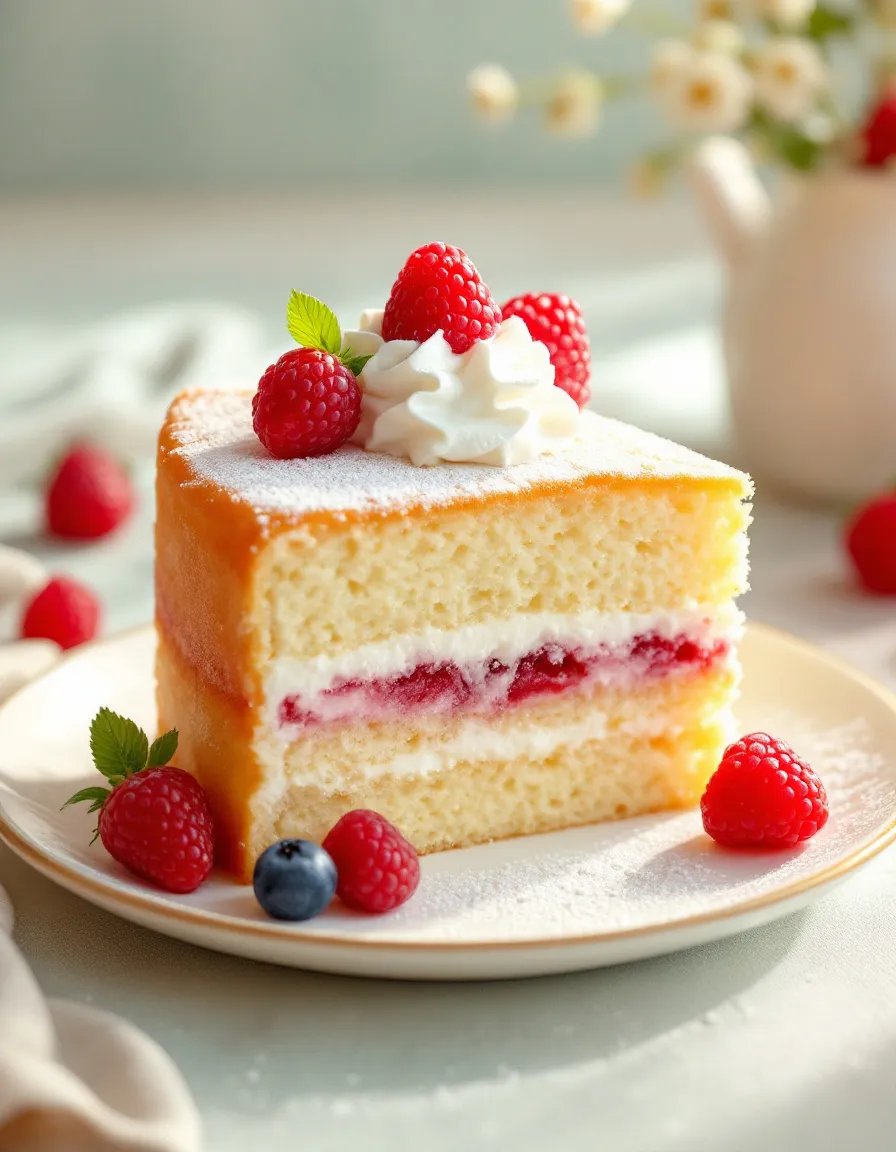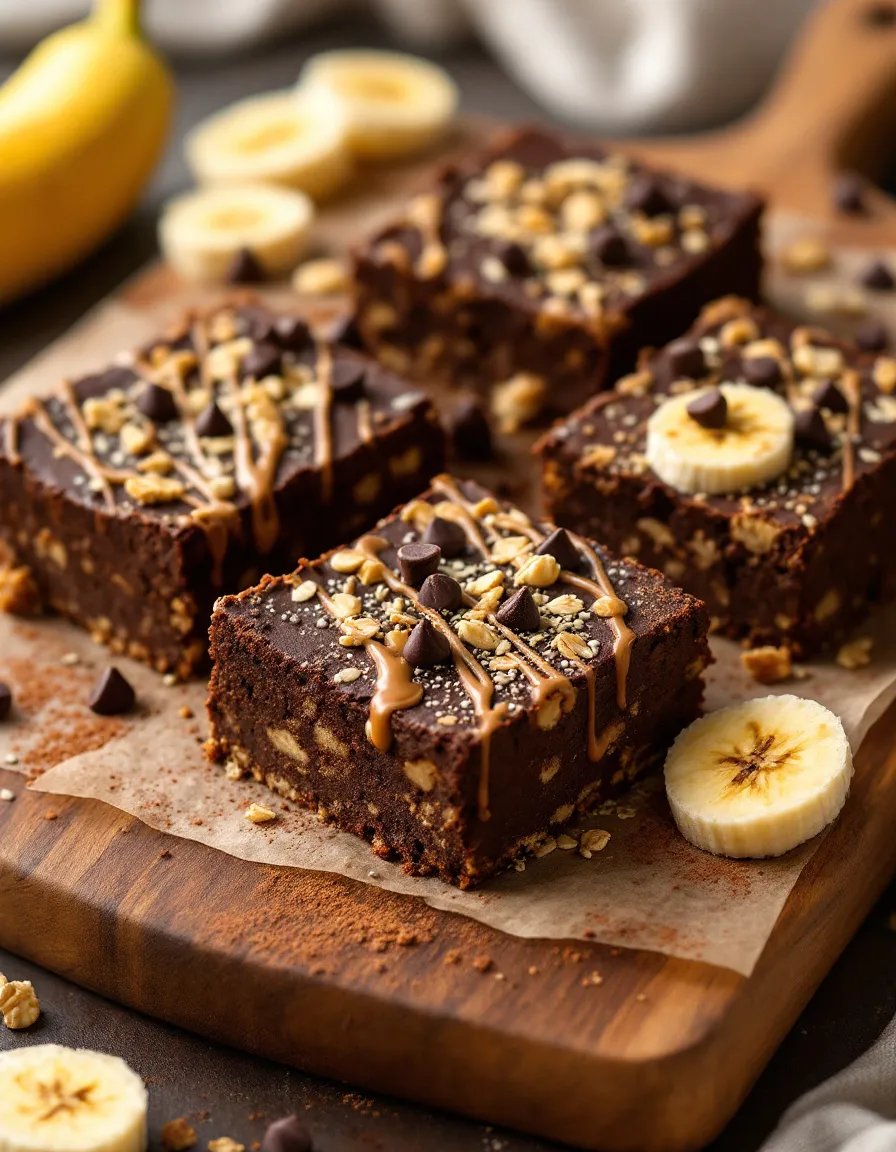Japanese Cotton Cake: The Fluffy, Cloud-Like Dessert You Need to Try
Japanese Cotton Cake is a delicate, airy dessert that melts in your mouth like a sweet cloud. This light-as-air sponge cake has gained worldwide popularity for its unique texture that resembles cotton—soft, fluffy, and incredibly tender. Unlike traditional sponge cakes, this Japanese version achieves its signature lightness through a special meringue technique and careful baking methods.
The magic of Japanese Cotton Cake lies in its perfect balance of flavors and textures. With just the right amount of sweetness and a subtle vanilla aroma, this cake is perfect for those who prefer desserts that aren’t overly rich. The golden-brown top gives way to a pale yellow interior that jiggles slightly when fresh from the oven, then settles into the most ethereal crumb structure you’ll ever experience in a cake.
Quick Recipe Highlights
- Flavor Profile: Delicate vanilla sweetness with a buttery undertone, perfectly balanced for a light dessert experience.
- Texture: Incredibly soft and airy with a melt-in-your-mouth quality that resembles cotton candy.
- Aroma: Warm vanilla and butter notes with a subtle eggy fragrance that’s comforting and inviting.
- Visual Appeal: Golden top with a pale, cloud-like interior that jiggles slightly when fresh from the oven.
- Skill Level Needed: Requires intermediate baking skills, particularly in egg white whipping and gentle folding techniques.
- Special Equipment: Needs a springform pan and water bath setup for proper baking.
Recipe Overview
- Difficulty Level: While not extremely complex, Japanese Cotton Cake requires precision in mixing and baking techniques to achieve its signature texture. The meringue must be whipped to perfect stiffness, and the folding technique must be gentle to maintain airiness.
- Category: Dessert, specifically a sponge cake variation with Asian influences.
- Cuisine: Japanese-inspired dessert that has become popular across Asia with various regional adaptations.
- Cost: Moderate cost ingredients, primarily eggs, butter, flour and sugar, with no expensive specialty items needed.
- Season: Perfect year-round, but particularly refreshing in spring and summer months.
- Occasion: Ideal for afternoon tea, light dessert after meals, or as a special treat for celebrations.
Why You’ll Love This Japanese Cotton Cake
The first bite of Japanese Cotton Cake is a revelation—it’s so light it practically dissolves on your tongue, leaving behind just the perfect hint of sweetness. Unlike heavier Western cakes, this delicate dessert won’t leave you feeling stuffed, making it perfect for those who want to enjoy dessert without overindulging. The texture is truly unique, with an airy crumb that’s moist yet not dense, achieving that perfect balance that’s hard to find in other cakes.
From a preparation standpoint, Japanese Cotton Cake is surprisingly straightforward once you master the key techniques. While it requires more care than a standard cake mix, the process is meditative and rewarding. Watching the egg whites transform into glossy peaks, then gently folding them into the batter is a satisfying experience that yields impressive results. The water bath baking method ensures even, gentle cooking that prevents drying or cracking.
Nutritionally, this cake is lighter than many alternatives, with less sugar and fat than traditional butter cakes. The high egg content provides protein, while the minimal flour keeps it relatively low in carbohydrates compared to denser cakes. For those watching their portions, a small slice satisfies thanks to the rich flavor concentration in the airy texture.
Socially, Japanese Cotton Cake makes a stunning presentation that’s sure to impress guests. Its jiggly texture when first removed from the oven creates excitement, and the clean, elegant appearance works for both casual and formal occasions. It pairs beautifully with fresh berries, whipped cream, or a dusting of powdered sugar for added visual appeal.
Cost-wise, this cake is budget-friendly to make, using simple pantry staples. A single cake can serve 8-10 people, making it economical for gatherings. The ingredients are readily available at any grocery store, with no special purchases required beyond perhaps a springform pan if you don’t already own one.
Historical Background and Cultural Significance
Japanese Cotton Cake, while inspired by Western sponge cakes, is distinctly Asian in its approach to texture and sweetness. The origins trace back to Japan’s adaptation of European baking techniques during the Meiji era when Western-style bakeries began appearing. Japanese bakers refined these techniques to create lighter, less sweet versions that suited local tastes, eventually developing this unique cotton-soft texture.
Culturally, this cake represents the Japanese philosophy of “less is more” in desserts—emphasizing subtle flavors and exquisite textures over overwhelming sweetness. It’s become particularly popular in Taiwan and other parts of East Asia, where versions like the famous “Cheese Cotton Cake” have emerged. The cake’s delicate nature reflects the precision and attention to detail valued in Japanese cuisine.
The evolution of Japanese Cotton Cake has seen several variations develop. Some versions incorporate cream cheese for added richness (though this makes it more like a cheesecake hybrid), while others use matcha or fruit flavors. The basic technique, however, remains consistent—achieving that signature airy texture through careful meringue preparation and gentle baking.
Regionally, you’ll find different presentations and serving styles. In Japan, it’s often served plain to appreciate the pure texture, while in Taiwan it might be topped with fresh fruit or whipped cream. Some bakeries have created towering versions by stacking multiple layers with light fillings in between, though the classic remains a single, perfect layer of cloud-like cake.
Ingredient Deep Dive
Eggs
Eggs are the star of Japanese Cotton Cake, providing structure and that signature airy texture. The whites, when whipped properly, create thousands of tiny air bubbles that expand during baking, while the yolks add richness and color. Fresh eggs at room temperature whip best, as cold eggs don’t achieve the same volume. If concerned about salmonella, pasteurized eggs work well too.
Nutritionally, eggs provide high-quality protein and essential amino acids. They’re rich in vitamins D and B12, along with choline which supports brain health. When selecting eggs, look for bright orange yolks which indicate higher nutrient content. Store eggs in their original carton in the main part of the refrigerator (not the door) for maximum freshness.
Cake Flour
Cake flour’s low protein content (about 7-9%) is essential for the tender crumb of Japanese Cotton Cake. The fine texture and minimal gluten development prevent toughness. If unavailable, you can make a substitute by replacing 2 tablespoons per cup of all-purpose flour with cornstarch and sifting together. Bleached cake flour works particularly well for its superior ability to blend smoothly into batters.
From a nutritional standpoint, cake flour is enriched with iron and B vitamins during processing. While not as nutrient-dense as whole wheat, its fine texture is irreplaceable for this recipe. Store flour in an airtight container in a cool, dry place to prevent moisture absorption and rancidity. For best results, sift the flour right before using to incorporate air.
Granulated Sugar
Sugar does more than sweeten—it stabilizes the meringue, helps retain moisture, and contributes to browning. Superfine sugar dissolves more easily in egg whites, creating a smoother meringue. The relatively small amount (compared to American cakes) allows the other flavors to shine while providing just enough sweetness to balance the eggs.
While sugar is often criticized nutritionally, the modest amount in this recipe (about 1 tablespoon per serving) makes it a reasonable treat. For alternatives, caster sugar works well, or you can pulse regular sugar in a food processor to make it finer. Avoid reducing the sugar significantly as it’s crucial for the cake’s structure.
Common Mistakes to Avoid
- Overbeating or underbeating the meringue: The egg whites should form stiff peaks that hold their shape when the whisk is lifted, but not so dry that they appear clumpy. Underbeaten whites won’t provide enough lift, while overbeaten ones make folding difficult and can lead to a coarse texture.
- Deflating the batter: Aggressive mixing when combining the meringue with the yolk mixture will knock out the precious air bubbles. Use a gentle folding motion with a silicone spatula, cutting through the center and scooping around the sides until just incorporated.
- Incorrect water bath setup: The water should come about halfway up the side of the cake pan, and the springform must be well-sealed with foil to prevent water seepage. Too little water and the cake may dry out; too much risks water entering the pan.
- Opening the oven door early: Sudden temperature changes can cause the delicate cake to collapse. Wait until at least the minimum baking time has passed before checking for doneness, and do so gently without slamming the door.
- Overbaking: Japanese Cotton Cake should remain slightly jiggly in the center when removed from the oven—it will continue to set as it cools. A toothpick inserted should come out with a few moist crumbs, not completely clean.
- Improper cooling: Cooling too quickly can cause collapse. Let the cake cool gradually in the turned-off oven with the door slightly ajar for about 15 minutes before removing to a wire rack.
- Using the wrong pan size: A 7- or 8-inch springform pan works best. Larger pans will produce too thin a cake that may dry out, while smaller ones risk overflow and uneven baking.
- Skipping the parchment paper: Even with a non-stick pan, lining the bottom with parchment ensures easy removal without tearing the delicate cake. The sides can be left unlined for proper rising.
Essential Techniques
Meringue Preparation
Perfect meringue is the foundation of Japanese Cotton Cake. Start with completely clean, grease-free bowls and utensils—any fat will prevent the whites from whipping properly. Room temperature whites whip faster and to greater volume than cold ones. Add cream of tartar or lemon juice (about 1/4 tsp per egg white) to stabilize the foam. Add sugar gradually once soft peaks form, about 1 tablespoon at a time, whipping until stiff, glossy peaks form that hold their shape when the whisk is lifted.
Bain-Marie (Water Bath) Baking
The water bath creates gentle, even heat that prevents the cake from drying out or rising too quickly and cracking. Wrap the springform pan tightly with heavy-duty aluminum foil to prevent water seepage. Place the pan in a larger baking dish and pour hot water halfway up the sides. The steam from the water bath keeps the oven environment moist, crucial for the cake’s delicate texture.
Pro Tips for Perfect Japanese Cotton Cake
- Use fresh eggs—they separate more cleanly and whip to greater volume than older eggs.
- Bring all ingredients to room temperature before starting for optimal emulsification and volume.
- Sift the flour and other dry ingredients twice to ensure a lump-free batter that incorporates easily.
- When folding in the meringue, work quickly but gently to maintain as much air as possible.
- Tap the filled pan gently on the counter before baking to release large air bubbles.
- If the top begins browning too quickly, tent loosely with aluminum foil.
- For easiest slicing, use a hot, clean knife—dip in hot water and wipe between cuts.
Variations and Adaptations
Matcha Cotton Cake
Incorporate 2 tablespoons of high-quality matcha powder into the flour mixture for a vibrant green tea version. The earthy matcha flavor pairs beautifully with the cake’s lightness. Sift the matcha with the flour to prevent clumping. This variation works particularly well served with sweet red bean paste or a dusting of powdered sugar.
Chocolate Cotton Cake
Replace 2 tablespoons of flour with cocoa powder for a chocolate version. You can also add 2 ounces of melted and cooled bittersweet chocolate to the yolk mixture. The chocolate adds richness while maintaining the airy texture. Serve with fresh raspberries for a beautiful contrast.
Serving and Presentation Guide
Japanese Cotton Cake makes its most dramatic presentation when served simply, allowing the perfect texture to shine. Dust the top lightly with powdered sugar using a fine-mesh sieve for an elegant snow-like effect. For special occasions, top with edible flowers or gold leaf. Fresh berries arranged around the base add color without overwhelming the delicate cake.
When slicing, use a sharp, thin-bladed knife dipped in hot water and wiped clean between cuts for neat portions. Serve on plain white plates to highlight the cake’s golden top and pale interior. For afternoon tea, cut into smaller rectangles rather than wedges for easier handling.
Storage and Shelf Life
Store Japanese Cotton Cake covered at room temperature for up to 2 days. For longer storage (up to 5 days), refrigerate in an airtight container, though this may slightly dry the texture. Bring to room temperature before serving for best flavor and texture. The cake can be frozen for up to 1 month—wrap tightly in plastic wrap then foil, and thaw overnight in the refrigerator.
Signs of spoilage include an off smell, visible mold, or excessive drying. The cake is best enjoyed fresh but makes excellent trifle or parfait layers if slightly stale. Avoid storing near strong-smelling foods as the cake can absorb odors easily.
Frequently Asked Questions
Why did my Japanese Cotton Cake collapse?
Collapse usually occurs from underbaking, sudden temperature changes, or improper cooling. Ensure the center is just set (slightly jiggly) when removing from oven, cool gradually in the turned-off oven first, then on a rack. Overbeating or underbeating the meringue can also affect structure.
Can I make this without a springform pan?
A springform is highly recommended for easy removal without damaging the delicate cake. If unavailable, line a regular cake pan thoroughly with parchment extending above the sides to help lift the cake out. The water bath setup becomes more challenging without a springform.
Why is there water in my cake pan?
This happens when the foil wrapping isn’t secure. Use heavy-duty foil and wrap the springform with at least two layers, bringing the foil up higher than the pan’s sides. Place the wrapped pan in the water bath, then pour water to the correct level.
The Recipe
Japanese Cotton Cake
Serves: 8
Prep Time: 20 mins
Cook Time: 60 mins
Total Time: 80 mins
Kitchen Equipment Needed
- 8-inch springform pan
- Stand mixer or hand mixer
- Large roasting pan for water bath
- Heavy-duty aluminum foil
- Silicone spatula
- Fine-mesh sieve
Ingredients
- 6 large eggs, separated and at room temperature
- 1/4 teaspoon cream of tartar
- 100g (1/2 cup) granulated sugar, divided
- 60g (1/4 cup) unsalted butter
- 80ml (1/3 cup) whole milk
- 1 teaspoon vanilla extract
- 80g (2/3 cup) cake flour
- 20g (3 tablespoons) cornstarch
- 1/4 teaspoon salt
Directions
- Preheat oven to 320°F (160°C). Line the bottom of an 8-inch springform pan with parchment paper. Do not grease the sides. Wrap the outside of the pan with 2 layers of heavy-duty aluminum foil to prevent water seepage.
- In a small saucepan, melt butter over low heat. Remove from heat and whisk in milk and vanilla. Set aside to cool slightly.
- Sift together cake flour, cornstarch and salt twice. Set aside.
- In a large bowl, whisk egg yolks with 30g (about 2 tablespoons) of the sugar until pale and slightly thickened. Gradually whisk in the warm butter mixture.
- Sift the flour mixture into the yolk mixture in two additions, whisking gently until smooth. Set aside.
- In a clean, grease-free bowl, beat egg whites with cream of tartar on medium speed until foamy. Gradually add remaining sugar, about 1 tablespoon at a time, beating on high speed until stiff peaks form.
- Gently fold one-third of the meringue into the yolk mixture to lighten it. Then carefully fold in the remaining meringue in two additions, using a cutting and folding motion to maintain as much air as possible.
- Pour batter into prepared pan and smooth the top. Tap gently on counter to release large air bubbles.
- Place the springform pan in a large roasting pan. Pour hot water into the roasting pan until it comes halfway up the sides of the springform.
- Bake for 55-65 minutes, until the top is golden and the center jiggles slightly when gently shaken. A toothpick inserted should come out with a few moist crumbs.
- Turn off oven and leave door slightly ajar with cake inside for 15 minutes. Then remove from oven and water bath, and cool completely on a wire rack before removing from pan.
Recipe Notes
- For best results, use fresh eggs at room temperature.
- If the top browns too quickly, tent loosely with foil during the last 15 minutes of baking.
- The cake will deflate slightly as it cools—this is normal.
- Serve at room temperature for optimal texture and flavor.






